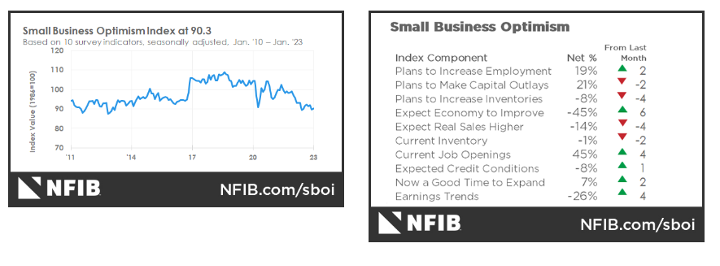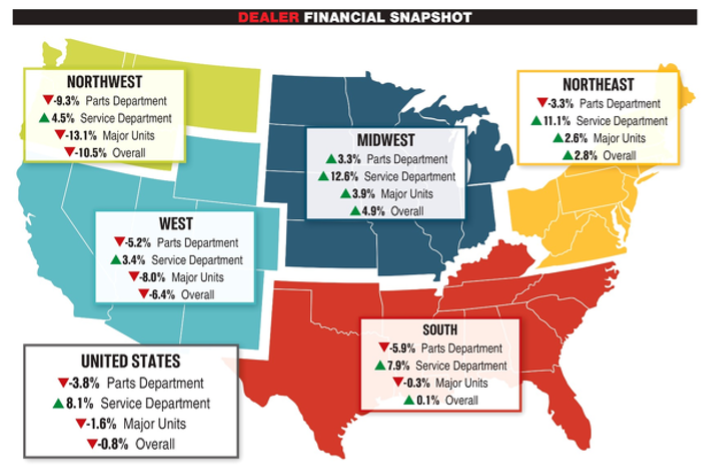KPI — February 2023: The Brief

Consumer confidence and sentiment remain mixed among consumers, as sticky inflation, ongoing supply chain challenges and persistent labor shortages continue to impact consumers and business owners alike.
The Conference Board Consumer Confidence Index® decreased in January following an upwardly-revised increase in December 2022. The Index now stands at 107.1 (1985=100), down from 109 in December. The Present Situation Index – based on consumers’ assessment of current business and labor market conditions – increased to 150.9 (1985=100) from 147.4 last month. The Expectations Index – based on consumers’ short-term outlook for income, business and labor market conditions – fell to 77.8 (1985=100) from 83.4. An Expectations Index below 80 often signals a recession within the next year.
Conversely, the University of Michigan Survey of Consumers – a survey consisting of approximately 50 core questions covering consumers’ assessments of their personal financial situation, buying attitudes and overall economic conditions – is currently 66.4, up 2.3% from the January final. After three consecutive months of increases, however, consumer sentiment remains low from a historical perspective.
“There are considerable downside risks to sentiment, with two-thirds of consumers expecting an economic downturn during the next year,” Hsu says. “Notably, the debt ceiling debate looms ahead and could reverse the gains seen over the last several months; past debt ceiling crises in 2011 and 2013 prompted steep declines in consumer confidence.”
According to the current NFIB Small Business Optimism Index, 26% of owners rate inflation as their top problem in business operations. Of those hiring or trying to hire, 91% report few or no qualified applicants for the positions being filled.
“The labor shortage continues to be a major concern for small businesses in the New Year, as nearly all owners trying to hire are reporting no or few qualified applicants,” says Bill Dunkelberg, NFIB chief economist. “Small businesses’ sales opportunities are limited because of the staffing shortage, but owners continue to make changes in business operations to compensate.”

Professionals in the automotive, RV and powersports industries remain steadfast in their efforts to evolve their business models and grow their brands in the face of adversity. As such, the monthly Key Performance Indicator Report serves as an objective wellness check on the overall health of our nation, from the state of manufacturing and vehicle sales to current economic conditions and consumer trends. Below are a few key data points explained in further detail throughout the report:
This Month’s Top Takeaways:
- The Manufacturing PMI® registered 47.4%, one percentage point lower than the seasonally adjusted 48.4% recorded in December, according to supply executives in the latest Manufacturing ISM® Report On Business®.
- The Consumer Price Index for All Urban Consumers (CPI-U) increased 0.5% in January on a seasonally adjusted basis, after increasing 0.1% the month prior, according to the U.S. Bureau of Labor Statistics. Over the last 12 months, the all-items index increased 6.4% before seasonal adjustment.
- The NFIB Small Business Optimism Index inched up to 90.3 in January, following a six-month low of 89.9 in December, but remains below the 49-year average of 98.
- Total new vehicle sales for January, including retail and non-retail transactions, are projected to reach 1,043,100 units – a 5.4% year-over-year incresase, according to a joint forecast from J.D. Power and LMC Automotive.
- Powersports Business says dealers across the country reported an overall revenue decrease in December, according to composite data from more than 1,700 dealerships in the U.S. that utilize CDK Lightspeed DMS. On average, dealership sales revenue is down 1.6%, despite service revenue up 8.1% but parts revenue down 3.8%.

KPI — February 2023: State of Business
Key Performance Indicators Report — February 2023



